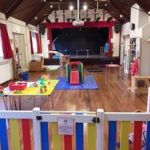Our Children are our curriculum.
We want our children to leave us Independent, Resilient and Curious. Our curriculum looks different every cohort, every day however our intent remains the same.
What is the curisoity approach?
Learning more – Parents (thecuriosityapproach.com)
The Curiosity Approach was the brainchild of Lyndsey Hellyn and Stephanie Bennet. The two have over 50 years of teaching at the early years foundation stage. This approach is an amalgamation of several different philosophies of early years education. It borrows heavily from the Montessori and Reggio Emelia systems of teaching.
The Curiosity approach differs from other systems by providing the child with real-life objects instead of toys to play with and explore. It believes that the toys have predefined roles that prevent the child from exploring its full potential and stick only to the stereotyped approach. By giving children real-life objects that they may see in their regular life, they open up the possibilities of the child creating new associations and uses for these objects and redefining how they interact with them.
It fires their imagination and inherent curiosity. This approach helps the children in developing their ability to think for themselves, explore their environment, make their own choices, and be the masters of their own learning.
The Curiosity approach capitalizes on the fact that children are curious and have an innate interest in the world around them. This includes the people, objects, and nature they see and interact with every day. Supporting this natural curiosity by creating a safe environment where they can explore and satisfy this curiosity is the mainstay of the Curiosity Approach.
How does it work?
As children grow and become more mobile, the ability to explore becomes more purposeful. They choose the objects that they want to explore and engage with. They will ask questions and try to understand how something works. This is the way of the Curiosity Approach – the encourage the child to explore her/his surroundings, choose the object that spikes their curiosity and try to understand its use and purpose. This approach to EYFS learning encourages the child to ask questions in the quest for self-learning.
It is a fun way of acquiring knowledge where the child sets the pace and direction for his/her own development and learning.
The Curiosity Approach deviates from the usual bright-colored classrooms with plastic or wooden toys. It, instead, uses neutral wall colors and wooden objects that are inspired by real-life objects. They believe that the bright colors may overstimulate a child. The look, smell, and feel of the toys is very alike and there is little to stimulate a child’s curiosity, while the bright colors overstimulate. Hence, this approach used wooden objects, and natural things – such as cloth, rope, fruits, vegetables, leaves, etc. to support learning.
New objects are introduced regularly to keep the children engaged and to rekindle the sense of curiosity and the desire to learn. This prevents boredom and provides the child with new stimulants to fire his/her imagination.
Curiosity is the key to learning and gaining knowledge . By fueling the child’s curiosity we are opening the doors of a vast world of knowledge for each child. Allowing them to satisfy their curiosity is encouraging them to seek, discover, and learn. Introducing an element of play in the process makes the learning effortless and enjoyable thus giving the child an incentive to continue with the knowledge acquisition.We believe that the learning environment is central to how children develop so therefore planning is necessary if we are to maximise opportunities for them. The planned environment covers all areas of the Early Years Foundation Stage.
Prime Areas
- Personal, Social and Emotional Development
- Physical Development
- Communication and Language
Specific Areas
- Literacy
- Mathematics
- Understanding the World
- Expressive Arts and Design
Food & Nourishment
Our free flow snack bar promotes healthy practices, providing fresh and dried fruit and vegetables alongside a carbohydrate-based snack. Water is available and accessible throughout the day. We try our upmost to cater for allergies, intolerances and family preferences by providing suitable alternatives guided by our families.












Ofsted Report
AANS was inspected by Ofsted in May 2019 and maintained our ‘Good’ rating.
Ofsted commented that:
“Children were curious and motivated and create their own activities with the resources and stories.”
“Children confidently introduce themselves to visitors and engage in conversation.”
“Staff are positive role models…”


